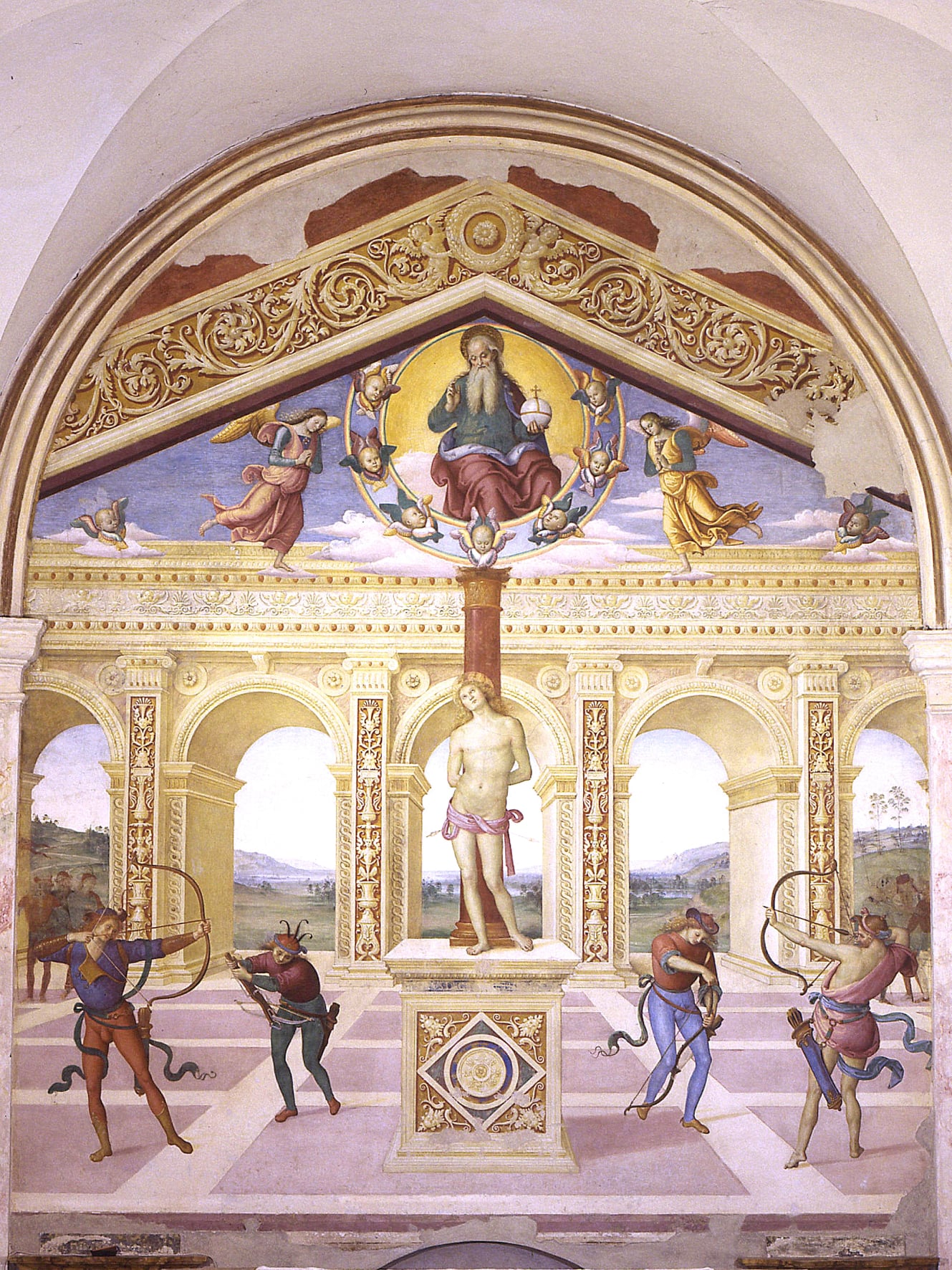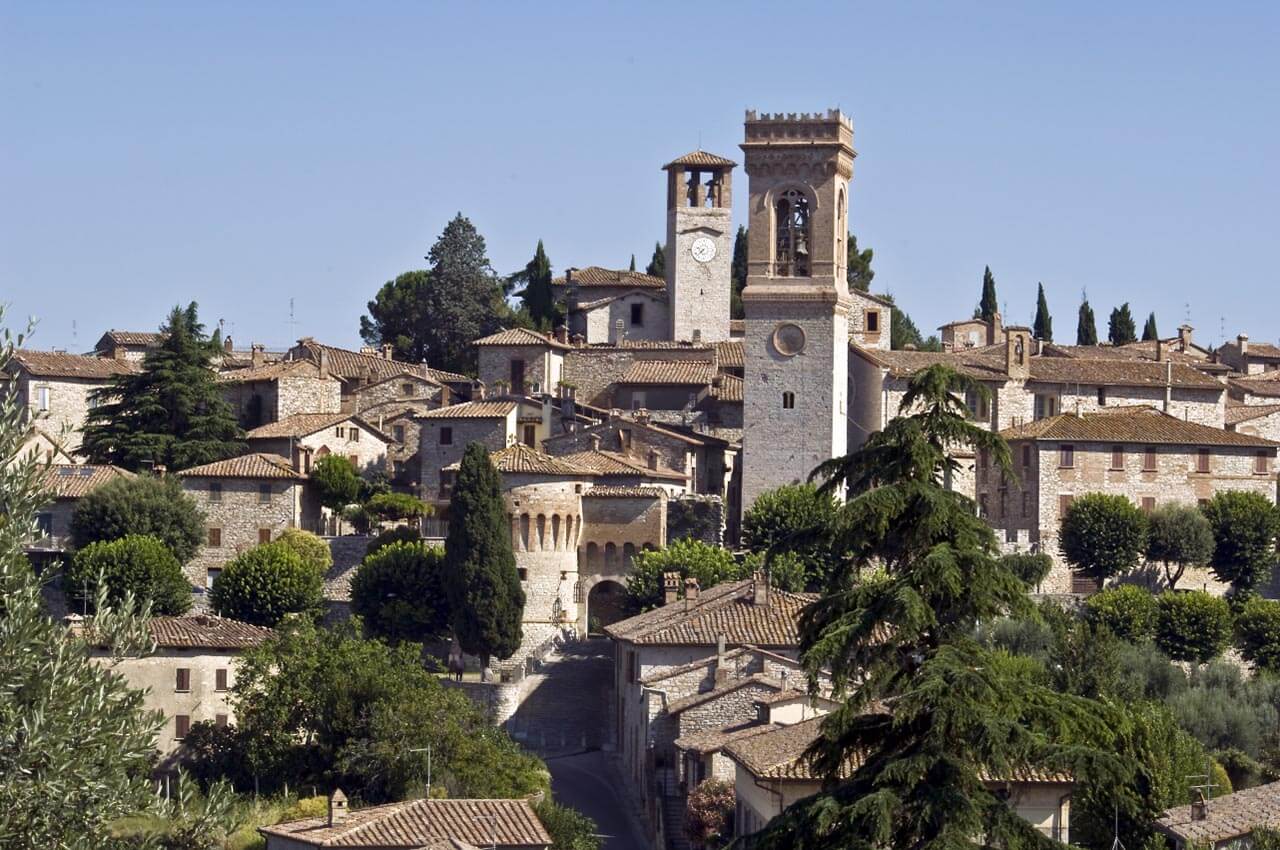I paesaggi resi celebri dal divin pittore non sono soltanto il frutto dell'immaginazione di un grande artista, ma borghi, campagne e scorci realmente esistenti che meritano di essere scoperti e vissuti! Ora potrai visitarli tutti con un solo biglietto per scoprire i monumenti e le opere che il celebre artista Perugino ha lasciato nei borghi più autentici dell’Umbria: Città della Pieve, Paciano, Panicale e Piegaro.
Il biglietto ha validità di 7 giorni dalla data di acquisto negli orari di apertura dei Musei.
Un'occasione imperdibile per scoprire non solo l’arte, ma anche i meravigliosi paesaggi e le tradizioni che caratterizzano Città della Pieve, Paciano, Panicale e Piegaro. Un viaggio che si snoda attraverso percorsi turistici, laboratori didattici e... more
Un'occasione imperdibile per scoprire non solo l’arte, ma anche i meravigliosi paesaggi e le tradizioni che caratterizzano Città della Pieve, Paciano, Panicale e Piegaro. Un viaggio che si snoda attraverso percorsi turistici, laboratori didattici ed eventi culturali che hanno come fulcro il contesto cittadino, ma che si allargano anche alle realtà storiche, artistiche, culturali e produttive di tutto il territorio circostante.
lessDa aprile a settembre: tutti i giorni alle ore 10:00 / 11:30 / 15:30 e 17:15
Da ottobre a marzo: venerdì ore 16:00 - sabato e domenica ore 10:00 / 11:30 e 16:00
Da ottobre a marzo: domenica e festivi dalle ore 15:00 alle ore 17:00
Da aprile a settembre: domenica e festivi dalle ore 15:00 alle ore 19:00 chiuso il 25 dicembre
Chiesa e Oratorio di S. Sebastiano (Via Belvedere)
Da ottobre a marzo: sabato e domenica con partenza dall’Ufficio Turistico alle ore 11:00 e alle ore 15:30
Aprile: sabato e domenica dalle ore 11:00 alle ore 13:00 e dalle ore 15:00 alle ore 17:00
Da maggio a settembre: tutti i giorni dalle ore 11:00 alle ore 13:00 e dalle ore 15:00 alle ore 17:00
Museo del Tulle, Teatro Caporali e Museo della Sbarra
Da ottobre a marzo: sabato e domenica con partenza dall’Ufficio Turistico alle ore 11:00 e alle ore 15:30
Da aprile a settembre: tutti i giorni con partenza dall’Ufficio Turistico alle ore 11:00 e alle ore 15:30
Da aprile a settembre: da martedì a domenica dalle ore 10:00 alle ore 13:00 e e dalle ore 15:00 alle ore 18:00
e nei giorni festivi: Lunedì di Pasqua, 25 aprile, 2 giugno
Da ottobre a marzo: dal venerdì alla domenica dalle ore 10:00 alle ore 13:00 e dalle ore 15:00 alle ore 18:00
e nei giorni festivi: 1° novembre, 8 dicembre, 26 dicembre, 6 gennaio
In auto:
Da Sud: Autostrada A3 fino a Caserta; prendere la A30 fino a Roma; proseguire sulla A1 Firenze-Roma uscita di Fabro; percorrere la SS 71 fino a Città della Pieve. Da Nord: Autostrada A1 uscita di Chiusi-Chianciano Terme; SS 478; SS 146; SS 71 fino a Città della Pieve.
In treno:
Stazione di Perugia o Stazione di Chiusi, quindi Servizio Autobus linea APM in partenza dalle Stazioni per Città della Pieve.

Città della Pieve and Panicale preserve some of Perugino's most famous artworks. The Magi's Adoration, the Deposition from the Cross, the Baptism of Christ, the Virgin Mary in Glory among Saints and the fresco of St. Anthony Abbot complete the visit to Città della Pieve, the medieval town that was the birthplace of Pietro Vannucci, known in art as Perugino. Walking through the characteristic small village alleys, one discovers Renaissance art and the beautiful landscape surrounding the town on the border with Tuscany. The Martyrdom of St. Sebastian in Panicale is a treasure hidden in a small church that, in addition to the famous artwork by the painter from Pieve, preserves another precious document of art, a fresco attributed to Raphael, a Perugino's pupil: a timeless dialogue between two great masters of the Italian Renaissance. Panicale is the place where landscape and art come together in a timeless tale.
Magione is a small village dominated by the Castle of the Order of the Knights of Malta and remembered for the magnificent sunsets that can be seen over Lake Trasimeno. The Lambardi Tower, built between the 12th and 13th centuries by the Knights of Jerusalem as a defensive system, is one of the village's symbols and a place from which to enjoy a breathtaking panorama. The Fishing Museum, in the hamlet of St. Feliciano, contains an interesting historical-anthropological retrospective of Trasimeno Lake.

Piegaro with its Glass Museum is an exceptionality of industrial archaeology. It's the only Glass Museum in Italy built inside an ancient glassworks. The history of glass processing in Piegaro has very ancient origins, in fact, since the Middle Ages master glassmakers from Piegaro worked on the construction site of Orvieto Cathedral to make windows and mosaic tesserae. Today the ancient glassworks, active until 1968, is the site of the Glass Museum and the centre of all cultural activities in the town. Interesting educational workshops help visitors discover the ancient history of glassmaking, so important for Piegaro.
The small village of Paciano, one of the most beautiful villages in Italy, is hosting Trasimemo, an archive of memory that aims to protect the community's cultural heritage, enhanced through the participatory construction of a virtual archive and through a number of museum installations.
A high wall encloses the ancient medieval Corciano's castle, rich in historical evidence and artworks. Its interior is lined with alleys, stairways, palaces, towers, gardens, churches and bell towers, in the setting of an intact medieval structure. The municipal Antiquarium, which houses palaeontological, prehistoric and numerous Etruscan and Roman artefacts from the municipal area. The Museum of Farming Civilisation, re-proposes a typical Umbrian country dwelling containing all the furnishings and tools of daily use. The Pievania Historical Museum is housed in the small church of San Cristoforo, collecting evidence of local religious life. The Torrione Di Porta Santa Maria, built in 1482 as Corciano's defensive structure, houses the Permanent Exhibition Centre on Medieval and Renaissance Culture. The Church of Santa Maria Assunta, inside which is Perugino's painting of the Assumption (1513) and Benedetto Bonfigli's Gonfalone painted in 1472.